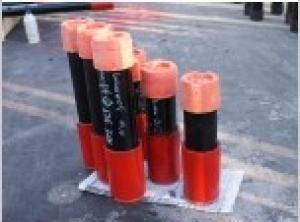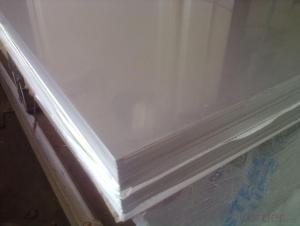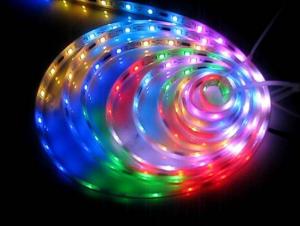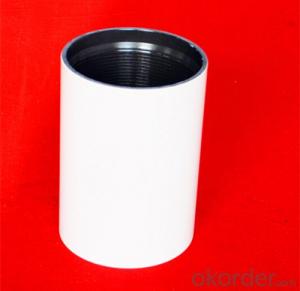1 4 Stainless Steel Tubing
1 4 Stainless Steel Tubing Related Searches
Best Paint For Stainless Steel Blanket Insulation For Steel Buildings Primer For Galvanized Steel Foam Filter For Stainless Steel H S Code For Stainless Steel Surface Grinding Wheels For Stainless Steel Surface Grinding Wheels For Hardened Steel Hole Saw For Stainless Steel Paint For Stainless Steel Stainless Steel For BbqHot Searches
Steel Mesh Panels For Sale Price For Stainless Steel Scrap Scrap Price For Stainless Steel Price For Stainless Steel Stainless Steel Tank For Sale Stainless Steel Sheets For Sale Cheap High Tea Sets For Sale Stainless Steel Tanks For Sale Stainless Steel For Sale High Density Fiberboard For Sale Solar Hot Water Collectors For Sale Scaffolding For Sale In Uae Scaffolding For Sale In Ireland Scaffolding For Sale In Houston Type Of Inverter For Solar Price Of Shipping Containers For Sale Types Of Inverter For Solar Stock Price For Aluminum Used Solar Inverter For Sale Steel Mesh Panels For Sale1 4 Stainless Steel Tubing Supplier & Manufacturer from China
Okorder.com is a professional 1 4 Stainless Steel Tubing supplier & manufacturer, offers integrated one-stop services including real-time quoting and online cargo tracking. We are funded by CNBM Group, a Fortune 500 enterprise and the largest 1 4 Stainless Steel Tubing firm in China.Hot Products
FAQ
- There are several ways in which stainless steel sheets are different from other types of metal sheets. To begin with, stainless steel is an alloy that contains at least 10.5% chromium. This chromium content creates a protective layer of chromium oxide on the metal's surface, giving it a high resistance to corrosion and staining. This sets stainless steel sheets apart from other metals as they can endure exposure to harsh environments, chemicals, and moisture without deteriorating. Additionally, stainless steel sheets provide excellent strength and durability. Due to their composition, they are highly resistant to heat, impact, and wear. This makes them suitable for a wide range of applications, including automotive, construction, and industrial settings, where strength and endurance are crucial. Another significant difference is the aesthetic appeal of stainless steel sheets. They have a modern and sleek appearance that is highly sought after in architectural and interior design projects. Stainless steel sheets can be easily polished to achieve a mirror-like finish, adding an elegant touch to any space. Furthermore, stainless steel sheets are known for their hygiene and cleanliness. They have a non-porous surface that does not absorb moisture, making them resistant to bacteria, mold, and other contaminants. This makes stainless steel sheets the preferred material for kitchen appliances, food processing equipment, and medical devices. Lastly, stainless steel sheets offer high levels of customization. They can be manufactured in various thicknesses, sizes, and finishes to meet specific requirements. Additionally, stainless steel can be easily formed, welded, and fabricated, allowing for creative designs and customization options. In conclusion, stainless steel sheets stand apart from other metal sheets due to their exceptional corrosion resistance, strength, durability, aesthetic appeal, hygiene, and customization options. These unique characteristics make stainless steel sheets a versatile and reliable choice for a wide range of applications.
- Various parameters are used to measure stainless steel sheets, determining their size, thickness, and dimensions. The most common approach to measuring stainless steel sheets is by employing gauge thickness. The gauge serves as a unit of measurement for determining the sheet metal's thickness. As the gauge number increases, the sheet becomes thinner. For instance, a 16 gauge stainless steel sheet would possess greater thickness and durability compared to a 24 gauge sheet. The gauge measurement is usually accompanied by the corresponding thickness in inches or millimeters, facilitating a better understanding of the sheet's actual dimensions. Besides gauge, stainless steel sheets are also evaluated based on their length and width, which are typically provided in feet, inches, or meters. The sheet's length and width can differ depending on the specific requirements of the project or application. Additionally, stainless steel sheets may possess a specific finish or surface texture. These finishes encompass a range of options, such as brushed, mirror, or textured finishes, which can enhance both the appearance and functionality of the stainless steel sheet. To summarize, gauge thickness is employed to measure stainless steel sheets, determining their thickness and durability. The sheet's length and width are measured in feet, inches, or meters, and it may also feature specific finishes or surface textures to fulfill diverse requirements.
- Medical applications commonly utilize various types of stainless steel sheet finishes, each designed to possess specific qualities and characteristics necessary for such environments. A prevalent finish is the 2B finish, acquired through a cold-rolling process, which yields a smooth, reflective surface. This finish is frequently employed in medical instruments and equipment due to its ease of cleaning and high resistance to corrosion. Additionally, the No. 4 finish, also referred to as a satin finish, is widely used in medical cabinets and surfaces. This finish showcases a brushed appearance and offers a favorable combination of aesthetics and functionality. It boasts easy cleaning capabilities and reliable corrosion resistance. For more specialized applications, options like the No. 8 mirror finish are available. This finish exhibits a highly reflective surface and often finds application in surgical instruments and other high-end medical equipment. It not only presents a visually appealing surface but also demonstrates excellent corrosion resistance. Furthermore, alternative finishes, such as the bead blast finish, contribute to the medical equipment industry. This finish imparts a matte surface with a textured appearance, ideal for medical equipment requiring a non-reflective surface. Ultimately, the selection of a stainless steel sheet finish for medical applications depends on the specific requirements of the equipment or surface. Each finish possesses distinct advantages and characteristics, necessitating careful consideration to ensure optimal performance and longevity in a medical environment.
- There are several types of finishes available for stainless steel sheets, including mill finish, brushed finish, mirror finish, embossed finish, and patterned finish.
- Yes, stainless steel sheets can be used for elevator panels. Stainless steel is a durable and corrosion-resistant material, making it suitable for high-traffic areas like elevators. It offers a sleek and modern aesthetic, making it a popular choice for elevator panels in commercial and residential buildings.
- The electrical conductivity of stainless steel sheets is relatively low compared to other metals, such as copper or aluminum.
- There exists a variety of stainless steel sheet patterns, each possessing its own distinct design and characteristics. Some commonly encountered patterns include: 1. Smooth or plain: This pattern serves as the most elementary and widespread option, showcasing a sleek and uncomplicated surface without any discernible texture or design. 2. Satin or brushed: By subjecting the stainless steel sheet to the gentle abrasion of a fine grit abrasive, this pattern is achieved, resulting in a uniform and directional grain. It imparts a subtle and sophisticated appearance. 3. Quilted or diamond: With a raised diamond-shaped design on its surface, this pattern enhances traction and slip resistance. It finds frequent application in flooring, stairs, and industrial settings. 4. Linen: Resembling the texture of linen fabric, this pattern is achieved by etching a series of parallel lines onto the stainless steel sheet. It adds a distinctive visual appeal and is suitable for various uses, including interior design and architectural projects. 5. Perforated: Comprising a series of small holes or perforations punched into the stainless steel sheet, this pattern creates a visually captivating and functional design. It is commonly employed in situations requiring ventilation or filtration. 6. Tread or checker: Displaying a raised checkerboard design on the surface of the stainless steel sheet, this pattern offers a non-slip surface. It is often utilized in flooring, stairs, and transportation equipment. These examples merely scratch the surface of the diverse array of stainless steel sheet patterns available. Each pattern offers a unique combination of aesthetics and functionality, enabling versatile use across a wide range of applications.
- Yes, stainless steel sheets are suitable for storage cabinets. They are strong, durable, and resistant to corrosion, making them ideal for long-term storage. Additionally, stainless steel has a sleek and modern appearance, making it a popular choice for both residential and commercial storage cabinets.















































